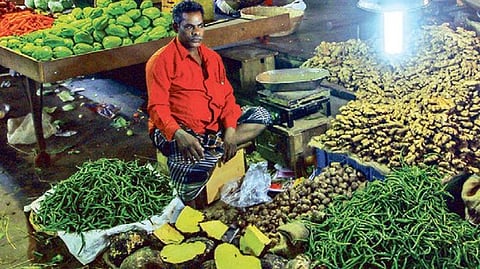

CHENNAI: Last Tuesday, it was reported that wholesale-price based inflation or WPI surged to a record high of 15.08% in India this April.
The spike in the prices of perishable goods such as fruits and vegetables was attributed to the heatwave, once again. While the usual suspects – food and manufacturing witnessed accelerated inflation in April, the sharpest spikes were saved for fuel and power.
Vegetables had grown dearer by 23.24%, fruits had grown expensive by 10.89%. The fuel and power basket on the other hand had witnessed an inflation of 38.66%. In fact, just a few days before, retail inflation in India had hit an eight-year high of 7.79 per cent.
During February and March this year, assembly elections were held in five states in India. At that time, the Centre tiptoed around concerns involving cost of living.
As a sort of temporary reprieve, keeping in mind the end game of populism, the Centre held back from raising fuel prices, which had started skyrocketing globally, thanks to the Russian invasion of Ukraine. Back then, India’s administration absorbed the hike in fuel prices, without passing on the burden to consumers in the form of pricier tickets for buses and trains.
In November last year, the Centre had reduced excise duty on petrol and diesel by Rs 5 and Rs 10 respectively. The measure offered some standby relief, but a backbreaking price surge was witnessed as soon as the election results were declared.
The fuel prices that had been artificially kept in check by the government had risen meteorically with petrol costing anywhere around Rs 110 per litre in Chennai. The impact was felt so acutely that even cab aggregators opted to revise their ride fares pan India over the past one week.
While the well-heeled might be in a position to absorb this body blow, middle class citizens are re-evaluating the manner in which they apportion their budgets on edible provisions. Homemakers are now switching to family meals that use lesser quantities of veggies that are sold at a premium.
Driving consumption, which is essential to the proper functioning of an economy, is a tall order in such times. Earlier in May, as part of its anti-inflationary measures, the RBI increased the repo rate to 4.40%, marking the first time that such an increase has been affected since August 2018. The impact of this is that home loans and car loans are set to become dearer, which is not good news.
However, the RBI’s intervention is in line with the measures adopted by the central banks of about 20 nations globally, that have moved on from their accommodative stances, to reining in the gush of liquidity that had become emblematic of the pandemic.
RBI is expected to further raise the interest rates as the Monetary Policy Committee (MPC) is scheduled to meet between June 6 and 8.
Stakeholders in the policy space believe there is a silver lining in the fact that there has been no hike in fuel prices for over 40 days now. Also, the Centre further slashed excise duty on petrol and diesel by Rs 8 and Rs 6 just two days ago. Coupled with a good monsoon, this could certainly ease the pressure on ordinary citizens.
While it is expected that a central bank’s job is to crack down on inflation, it must be remembered that there are no measures that work overnight. In developed nations, the impact of inflation implies a toning down on discretionary spending.
But here in India, which is still an emerging economy, a price hike has a direct consequence on whether millions go to sleep on an empty stomach or not. Which is why the stakes are infinitely higher as far as India’s apex bank is concerned.
Visit news.dtnext.in to explore our interactive epaper!
Download the DT Next app for more exciting features!
Click here for iOS
Click here for Android